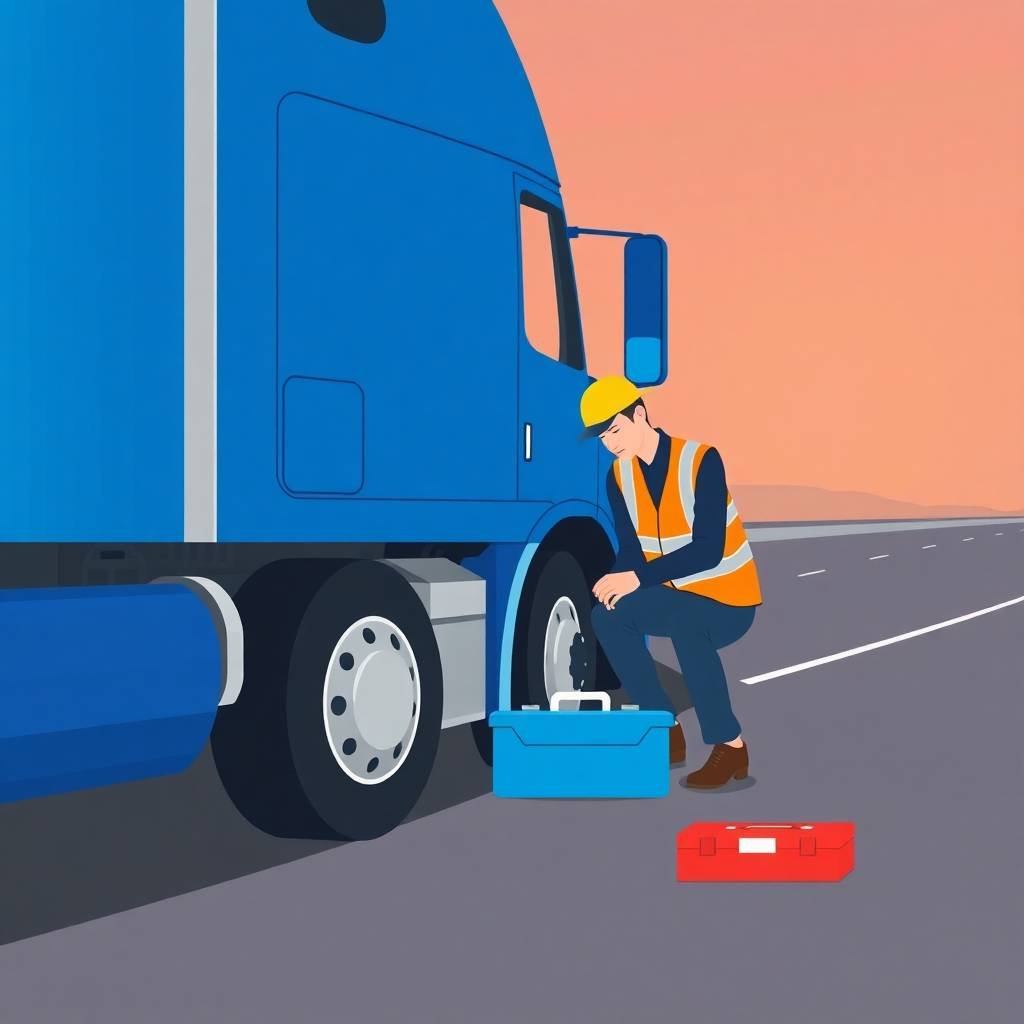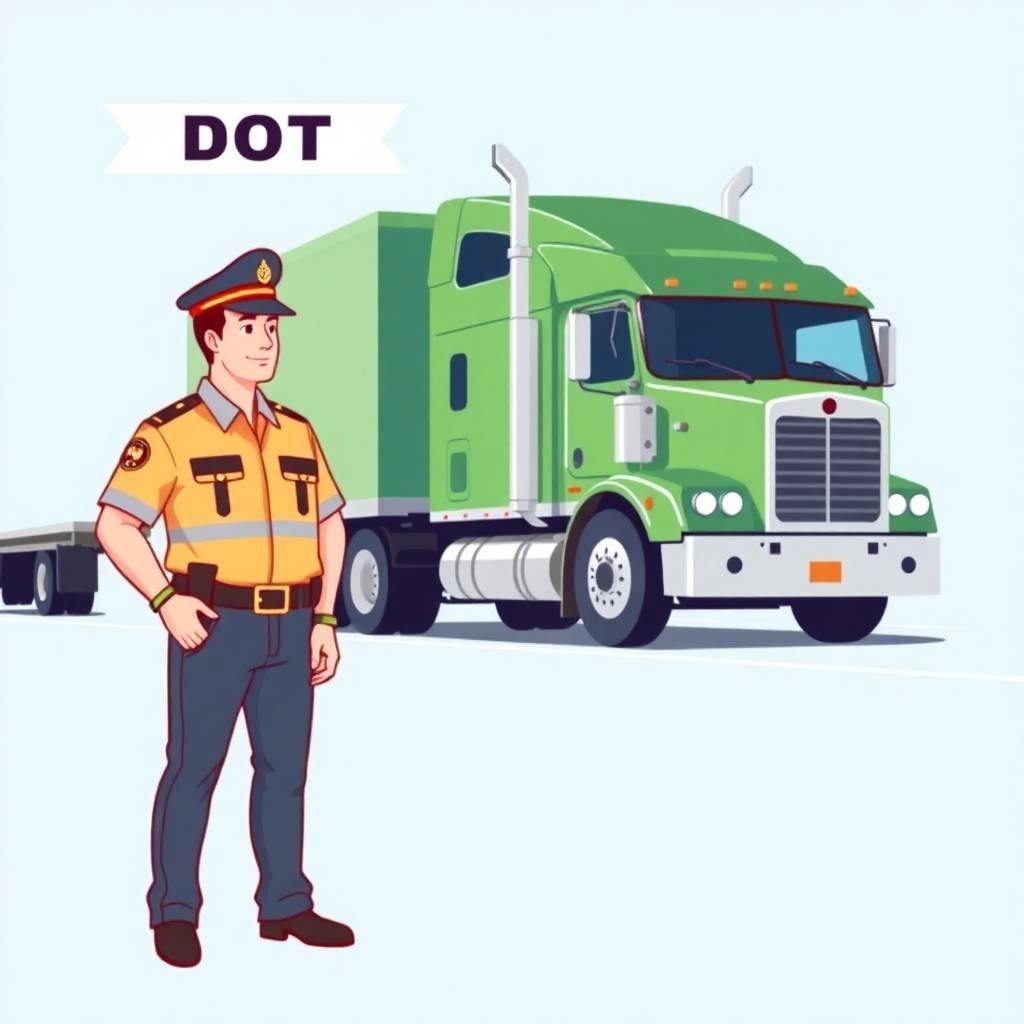1. Understanding the New Entrant Safety Audit Timeline: What to Expect and When
The New Entrant Safety Audit Timeline is a critical period for every motor carrier starting operations in the United States. Managed by the Federal Motor Carrier Safety Administration (FMCSA), this audit process determines whether a new carrier can operate safely and in compliance with federal regulations. Understanding the steps involved in the New Entrant Safety Audit Timeline can help carriers avoid costly mistakes, improve safety scores, and ensure long-term success.
What Is the New Entrant Safety Audit Timeline?
The New Entrant Safety Audit Timeline begins once your USDOT number is activated and continues through an 18-month monitoring period. During this time, the FMCSA will evaluate your company’s safety management practices, typically conducting a safety audit within the first 12 months. If your business fails this audit, you risk being placed out of service.
To prepare, familiarize yourself with FMCSA regulations at FMCSA.gov and the U.S. Department of Transportation. Also, regularly review insights and updates at Truckers Compliance Hub to stay ahead of compliance trends.
Key Milestones in the New Entrant Safety Audit Timeline
- Startup Phase (Day 0 – Day 30):
Carriers should immediately implement a safety management system. Use this DOT Compliance Checklist to begin organizing key documents like DQ files, drug and alcohol testing records, and maintenance logs. - DQ File Management:
Driver Qualification files are one of the first things auditors inspect. Learn about DQ file requirements and common violations to avoid non-compliance. - Drug & Alcohol Testing Compliance:
The FMCSA requires compliance with strict drug and alcohol policies. Review your responsibilities through our guides on pre-employment testing, random testing, and program management. We also offer Drug and Alcohol Testing Management services to simplify your compliance efforts. - Clearinghouse and SMS Readiness:
Be sure you’re registered with the FMCSA Clearinghouse. Visit our FMCSA Clearinghouse Compliance page to ensure you’re set up correctly. Monitoring your Safety Measurement System (SMS) data is equally important during this timeline. - Audit Preparation:
About 6 to 12 months into the New Entrant Safety Audit Timeline, you’ll be notified of your audit. Be proactive by reviewing this detailed DOT Audit Preparation 2025 guide and scheduling a consultation here to assess your audit readiness. - Common Compliance Mistakes to Avoid:
Many carriers are flagged for preventable errors. Our guide on FMCSA Compliance Mistakes can help you stay ahead. If you’ve already encountered issues, visit our page on how to correct FMCSA violations. - Post-Audit Survival and Beyond:
Even after passing, continuous compliance is essential. Visit our New Entrant Safety Audit Survival Tips and CSA intervention thresholds to maintain your safety rating. Use our Driver Safety Score Management service to monitor your fleet’s performance.
Helpful Tools and Ongoing Support
Owner-operators and new fleet owners can find additional help through services tailored for them:
- DOT Audit Preparation Services
- Compliance Checklist for Owner-Operators
- IFTA, IRP & BOC-3 Support
- UCR Filing Deadlines
For more insights, visit:
- FMCSA Compliance Help for Trucking Companies
- FMCSA Compliance Services for Owner Operators
- Owner-Operator Compliance Solutions
We encourage you to explore our full list of educational content and services on Truckers Compliance Hub and to familiarize yourself with our Disclaimer and Terms of Service.
Understanding the New Entrant Safety Audit Timeline is more than a regulatory requirement—it’s a roadmap to a sustainable, compliant, and successful operation. Proper planning, guidance, and continuous monitoring will ensure you meet every milestone without a compliance meltdown.

2. Pre-Audit Preparation: Setting Up Your Safety Management System for Success
Establishing a strong foundation before undergoing a compliance review is essential for passing the FMCSA’s safety evaluation. A well-prepared safety management system is one of the most critical components of surviving the New Entrant Safety Audit Timeline. This 18-month period can define the future of your trucking operation, so preparing your systems early is not optional—it’s necessary.
Why Pre-Audit Preparation Matters
The New Entrant Safety Audit Timeline begins immediately after your USDOT number is activated. Within the first 12 months, your company will undergo a safety audit by the FMCSA to determine if you meet required safety standards. Your audit results can lead to continued operations or result in your carrier being placed out of service. Reviewing the official regulations at FMCSA.gov and Transportation.gov can help you understand what’s expected, but implementing those standards is where true success lies.
Building a Compliant Safety Management System
To navigate the New Entrant Safety Audit Timeline, your safety management system must include complete documentation, ongoing training, and clear processes. Start with this DOT Compliance Checklist to ensure you’re tracking all necessary components, from driver files to drug and alcohol testing records.
Driver files are a top priority. Use our guide on Driver Qualification File Requirements and avoid critical mistakes by reviewing common DQ file violations. Incomplete or missing files are one of the most frequent issues flagged during audits.
Drug and Alcohol Testing Program Setup
A fully managed and compliant drug and alcohol testing program is another major area of concern during the New Entrant Safety Audit Timeline. Ensure your program covers pre-employment, random, and post-accident testing. You can explore full program details here and drug and alcohol testing compliance guidelines. For streamlined compliance, check out our Drug and Alcohol Testing Management services.
Utilize FMCSA Data to Stay Ahead
Understanding how your performance is measured throughout the New Entrant Safety Audit Timeline is crucial. Regularly check your status in the FMCSA Safety Measurement System (SMS), and explore services like Driver Safety Score Management to keep your records clean.
Correcting Mistakes Before They Cost You
Even with the best preparation, mistakes can happen. Learn how to correct FMCSA violations quickly to stay compliant. You can also get personalized guidance by scheduling a 30-minute consultation with our compliance specialists.
Long-Term Compliance Starts Now
As your New Entrant Safety Audit Timeline progresses, continue referring to tools like our DOT Audit Preparation Guide, and be sure you’re meeting FMCSA compliance requirements at every stage. Our Audit Preparation Services and Checklist for Owner-Operators can ensure your operation is always one step ahead.
For ongoing support during the New Entrant Safety Audit Timeline, explore additional resources:
- New Entrant Audit Survival Tips
- CSA Intervention Thresholds
- UCR Filing Deadlines
- IFTA, IRP & BOC-3 Support
More help is available through our FMCSA compliance solutions, services for owner-operators, and extended owner-operator packages. You can always view the latest insights and updates on our main site.
Please ensure you also review our Disclaimer and Terms of Service for a full understanding of our guidance and services.
Preparing properly at the start of the New Entrant Safety Audit Timeline can make the difference between success and shutdown. Stay informed, stay compliant, and invest in systems that set your trucking company up for long-term success.

3. Driver Qualification Files: The First Thing Investigators Check
When it comes to the New Entrant Safety Audit Timeline, your Driver Qualification (DQ) Files are not just another checklist item—they are often the very first thing investigators examine. For motor carriers, especially new entrants, understanding what these files must include and how to keep them audit-ready is essential for surviving the FMCSA’s compliance review process.
Why Driver Qualification Files Matter in the New Entrant Safety Audit Timeline
During the New Entrant Safety Audit Timeline, FMCSA auditors are tasked with verifying whether your operations meet federal safety standards. One of the primary areas of focus is your DQ files, which must contain specific documentation as outlined by the FMCSA. Errors or missing information in these files can lead to serious compliance violations or even result in your company being placed out of service.
You can view a full breakdown of requirements in our guide on Driver Qualification File Requirements. For a more actionable approach, explore our DOT Compliance Checklist to ensure you’re meeting every detail mandated during your New Entrant Safety Audit Timeline.
What Must Be Included in a DQ File
DQ files are more than just employment records. They must include motor vehicle records, medical certificates, road test results, prior employment verifications, and more. Each item plays a crucial role in demonstrating that your drivers are fully qualified under FMCSA regulations. If you’re unsure what’s missing, our guide on DQ File Violations offers examples of common errors that could trigger red flags early in your New Entrant Safety Audit Timeline.
Drug and Alcohol Testing: A Connected Compliance Element
Part of DQ file compliance involves drug and alcohol testing documentation. Carriers must maintain records for pre-employment, random, and post-accident testing. These elements tie directly into your driver drug and alcohol testing program, which is a frequent focus during the New Entrant Safety Audit Timeline. Use our Drug and Alcohol Testing Management services to stay on track.
How to Prepare Your Files for the Safety Audit
Don’t wait until audit day to begin preparing. Use our full DOT Audit Preparation guide and schedule a consultation with our experts to receive customized support. For owner-operators, our Compliance Checklist for Owner-Operators provides a streamlined solution to get ready fast.
Avoiding Costly Mistakes
Even small compliance mistakes can have large consequences under the New Entrant Safety Audit Timeline. Review our list of FMCSA compliance mistakes and learn how to correct FMCSA violations before they become audit issues.
Stay Compliant with the Right Tools
We also offer tools to help manage your safety score, track your CSA intervention thresholds, and maintain other vital compliance tasks like UCR filings and IFTA/IRP/BOC-3 support.
To deepen your understanding of the New Entrant Safety Audit Timeline, explore:
- FMCSA Compliance Help for Trucking Companies
- FMCSA Compliance Services for Owner Operators
- Survival Tips for the New Entrant Audit
Also, make sure to keep up with the latest insights by visiting our blog and reviewing our FMCSA Clearinghouse Compliance and SMS 2025 articles.
For additional guidance, please review our Disclaimer and Terms of Service.
The New Entrant Safety Audit Timeline may feel overwhelming, but having airtight Driver Qualification Files is one of the most effective ways to start strong and stay compliant.

4. Hours-of-Service Compliance: Avoiding One of the Most Common Audit Failures
Hours-of-Service (HOS) compliance is a core requirement during the New Entrant Safety Audit Timeline—and one of the most frequent areas where carriers fail. Improper log management, violations of driving limits, and lack of supporting documents can quickly lead to citations, fines, and conditional safety ratings. Understanding how to properly manage and document HOS is critical to passing your FMCSA audit successfully.
Why HOS Violations Are a Major Red Flag During the New Entrant Safety Audit Timeline
The New Entrant Safety Audit Timeline is designed to assess whether your company has the operational and safety procedures in place to comply with FMCSA regulations. HOS violations are a direct indicator of driver fatigue and operational mismanagement, which is why they are heavily scrutinized during audits. For a detailed overview of FMCSA’s position on HOS and other compliance areas, visit the Federal Motor Carrier Safety Administration and U.S. Department of Transportation.
During this audit window, auditors will check your electronic logging devices (ELDs), supporting documents, and patterns of violations. Use our DOT Audit Preparation service to ensure your records are complete and defensible.
Common HOS Violations New Entrants Must Avoid
Some of the most common issues that appear during the New Entrant Safety Audit Timeline include failing to maintain accurate logs, exceeding the 11-hour driving limit, not taking required rest breaks, or falsifying logbooks. These are not just technical infractions—they reflect poorly on your safety management system.
To avoid these pitfalls, consult our DOT Compliance Checklist and ensure you’re aligned with FMCSA’s hours-of-service rules.
Building a System That Supports Compliance
A robust safety management system includes thorough driver training, consistent review of logs, and proper recordkeeping. If you’re an owner-operator or a small fleet, our Compliance Checklist for Owner-Operators is an essential resource.
You should also actively monitor your Safety Measurement System (SMS) scores, which are directly impacted by HOS violations. Additionally, learn how to correct FMCSA violations before they escalate.
Services to Help You Stay Compliant
Beyond preparation, staying compliant means having the right tools in place. Our Driver Safety Score Management and CSA Intervention Thresholds services provide ongoing support throughout the New Entrant Safety Audit Timeline.
You can also explore our solutions for Drug and Alcohol Testing Management and IFTA/IRP/BOC-3 support, as both are critical components of a complete compliance system. For assistance, you can schedule your personalized consultation today.
Linking HOS to Broader Compliance Readiness
It’s important to view HOS as one part of a larger strategy. Make sure your Driver Qualification Files, DQ file violations, and drug and alcohol testing programs are also in order.
Review our insights on FMCSA Compliance Mistakes and FMCSA Compliance Requirements to see how HOS ties into the bigger picture of the New Entrant Safety Audit Timeline.
More Resources to Keep You Audit-Ready
For trucking companies of all sizes, we provide ongoing education and support via our blog, covering critical topics like FMCSA Clearinghouse Compliance, Drug and Alcohol Testing Compliance, and Pre-Employment Testing Requirements.
For additional resources, explore:
- FMCSA Compliance Services for Owner Operators
- FMCSA Compliance Help for Trucking Companies
- New Entrant Safety Audit Survival Tips
Lastly, please review our Disclaimer and Terms of Service for full transparency.
By proactively managing HOS compliance and understanding where it fits into the New Entrant Safety Audit Timeline, you position your business for long-term success.

5. Vehicle Maintenance and Inspection Records: Proving Your Commitment to Safety
For new motor carriers, proving your dedication to vehicle safety is non-negotiable—especially during the New Entrant Safety Audit Timeline. One of the most telling indicators of your safety culture is how you manage and maintain your vehicle inspection and maintenance records. These records not only reflect compliance but also demonstrate a genuine commitment to minimizing risk on the road.
Why Maintenance Records Matter During the New Entrant Safety Audit Timeline
As part of the New Entrant Safety Audit Timeline, the FMCSA requires detailed documentation showing that your fleet is being properly maintained and regularly inspected. Missing or inaccurate records can result in failed audits, fines, and the suspension of operating authority. According to the FMCSA, preventative maintenance, daily inspections, and prompt repair documentation are essential requirements.
Your maintenance files must include annual inspections, post-trip reports, repair histories, and evidence of systematic inspection intervals. If you’re unsure whether your current process meets federal standards, our DOT Audit Preparation service can help assess and organize your records ahead of your safety audit.
How to Build an Effective Vehicle Maintenance System
A compliant maintenance program involves much more than fixing issues when they arise. Your system should be proactive, with clearly scheduled inspections and documentation that aligns with FMCSA requirements. Our DOT Compliance Checklist for Owner-Operators outlines exactly what should be tracked for audit success.
Staying organized is key throughout the New Entrant Safety Audit Timeline, especially since maintenance issues can directly impact your Safety Measurement System (SMS) scores. Poor scores may trigger CSA intervention thresholds, audits, or even out-of-service orders.
Vehicle Maintenance and Other Compliance Areas Go Hand-in-Hand
Properly maintaining your vehicles also supports compliance in other areas, including driver qualification files, drug and alcohol testing, and driver safety score management. These areas are all heavily reviewed during the New Entrant Safety Audit Timeline.
It’s important to conduct periodic internal reviews using our DOT Compliance Checklist and address any FMCSA compliance mistakes before auditors find them. Our team can also assist with how to correct FMCSA violations if issues are identified during your audit.
Professional Support to Keep You Audit-Ready
If managing your vehicle records feels overwhelming, our experts are here to support you. We offer assistance with UCR filing deadlines, IFTA/IRP/BOC-3 support, and drug and alcohol testing management. Book a free 30-minute consultation today to review your compliance standing.
Don’t wait until the audit is around the corner—proactive preparation is the best strategy for success during the New Entrant Safety Audit Timeline. Visit Truckers Compliance Hub to explore recent posts on related topics like DQ file violations, pre-employment testing, and random DOT drug testing.
For ongoing support, check out:
- FMCSA Compliance Help for Trucking Companies
- FMCSA Compliance Services for Owner Operators
- New Entrant Safety Audit Survival Tips
We encourage all carriers to review our Disclaimer and Terms of Service to understand the scope of services provided.
A well-maintained vehicle is more than a compliance requirement—it’s a direct reflection of your company’s safety culture. Use the New Entrant Safety Audit Timeline as a benchmark to elevate your operational standards and ensure long-term success.

6. Mock Audits and Internal Reviews: Testing Your Readiness Before the Real Thing
Understanding the importance of the New Entrant Safety Audit Timeline is essential for every motor carrier just starting out. The Federal Motor Carrier Safety Administration (FMCSA) mandates this audit within the first 12 months of operation to ensure new carriers are complying with all safety regulations. One of the most effective strategies for passing this audit is conducting mock audits and internal reviews before the real thing.
Why Mock Audits Matter in the New Entrant Safety Audit Timeline
Mock audits allow carriers to evaluate their current level of compliance and correct any issues before facing an FMCSA inspector. They mimic the structure of the actual audit and are especially critical during the New Entrant Safety Audit Timeline, when small oversights can result in costly penalties or the suspension of your operating authority.
At Truckers Compliance Hub, we help companies prepare through structured mock audits that evaluate everything from driver qualification files to drug and alcohol testing compliance. By identifying and fixing problems early, you can meet or exceed FMCSA standards when the real audit begins.
What Should Be Reviewed Internally?
During the New Entrant Safety Audit Timeline, your internal reviews should cover all areas outlined in the DOT Compliance Checklist, including:
- FMCSA Clearinghouse compliance
- DQ file violations
- Drug and alcohol testing program
- Safety Measurement System scores
- CSA intervention thresholds
Auditors will assess your operations using these same criteria, so it’s crucial to evaluate your records against FMCSA expectations as found at FMCSA.gov and Transportation.gov.
Prevent Mistakes Before They Happen
Many carriers unknowingly fall short of compliance requirements during the New Entrant Safety Audit Timeline due to documentation errors or overlooked tasks. Internal reviews help uncover FMCSA compliance mistakes like incomplete inspection logs, missing drug test results, or late UCR filings.
With our expert guidance, you can take corrective action using our How to Correct FMCSA Violations service. We also provide DOT audit preparation and driver safety score management to help keep your fleet compliant and audit-ready.
Be Ready Before They Knock
Whether you’re managing IFTA/IRP/BOC-3 requirements or navigating pre-employment testing rules, a mock audit offers peace of mind during the New Entrant Safety Audit Timeline. You can explore more tools for preparation in our New Entrant Safety Audit Survival Tips guide.
If you’re unsure where to begin, schedule your 30-minute consultation and let our experts walk you through a tailored audit prep process.
Ongoing Support for Long-Term Compliance
The New Entrant Safety Audit Timeline is just the beginning. Continued compliance requires routine internal evaluations and ongoing education. Our full suite of services—including drug and alcohol testing management and owner-operator compliance services—supports your growth beyond the initial audit.
For additional insights, check out:
- FMCSA Compliance Help for Trucking Companies
- FMCSA Compliance Services for Owner Operators
- The latest blog posts at Truckers Compliance Hub
Make sure to review our Disclaimer and Terms of Service for details on our offerings.
Mock audits are not just about passing an inspection—they’re about ensuring your company runs as safely and efficiently as possible throughout the New Entrant Safety Audit Timeline and beyond.

7. Post-Audit Follow-Up: Responding to Violations and Staying on the Road
Completing your FMCSA audit is a major milestone—but the journey doesn’t end there. If you’ve received violations or conditional ratings during your audit, how you respond can determine whether you remain in operation. Understanding how post-audit procedures align with the New Entrant Safety Audit Timeline is key to your success as a carrier.
The New Entrant Safety Audit Timeline and What Comes Next
The New Entrant Safety Audit Timeline begins as soon as you’re granted operating authority. Within your first 12 months, the Federal Motor Carrier Safety Administration (FMCSA) conducts a safety audit to evaluate your compliance practices. What many carriers don’t realize is that failing to adequately respond to post-audit violations can result in revocation of authority.
If your audit results in violations, you’ll receive a Corrective Action Plan (CAP) notice. Responding promptly and thoroughly within the New Entrant Safety Audit Timeline is not optional—it’s mandatory.
To stay ahead, use our DOT Audit Preparation Services and How to Correct FMCSA Violations guide.
Common Violations and How to Address Them
Most violations during the New Entrant Safety Audit Timeline stem from avoidable compliance issues, such as:
- Incomplete driver qualification files
- Missing drug and alcohol testing documentation
- Failing to enroll in random drug testing programs
- FMCSA Clearinghouse noncompliance
We offer drug and alcohol testing management to help you avoid these pitfalls and stay compliant within your New Entrant Safety Audit Timeline.
Rebuilding Your Compliance Strategy
A key part of post-audit recovery is identifying where your compliance structure failed. Our DOT Compliance Checklist for Owner-Operators and CSA intervention thresholds tools help you monitor ongoing performance.
If your safety score was impacted, use our driver safety score management service to reduce your risk of FMCSA intervention. Visit FMCSA.gov and Transportation.gov to stay informed on regulatory updates.
Stay on the Road with Strategic Support
Navigating the New Entrant Safety Audit Timeline is easier with expert support. From managing IFTA/IRP/BOC-3 filings to ensuring timely UCR compliance, our team ensures your post-audit response is comprehensive.
Explore our in-depth resources like:
- FMCSA Compliance Help for Trucking Companies
- FMCSA Compliance Services for Owner Operators
- New Entrant Safety Audit Survival Tips
We also cover complex topics in our blog, such as FMCSA Compliance Mistakes and the Safety Measurement System (SMS) 2025. Visit TruckersComplianceHub.com to read the latest.
Book Expert Support Now
Responding to audit violations within the New Entrant Safety Audit Timeline requires precision and urgency. Schedule a free consultation with our compliance team to build your CAP and secure your operating future.
For questions about our services or legal disclaimers, review our Disclaimer and Terms of Service.
Post-audit follow-up isn’t just about compliance—it’s about protecting your authority, your business, and your future in the trucking industry.

What is the New Entrant Safety Audit Timeline, and when does it begin?

The New Entrant Safety Audit Timeline begins the moment your USDOT number is activated and spans an 18-month period. During this time, the FMCSA closely monitors your safety practices and typically conducts a safety audit within the first 12 months. To better understand how to prepare from day one, check out this DOT audit preparation guide for essential steps and documentation you’ll need.
What records are most important to have ready during a New Entrant Safety Audit?

During the New Entrant Safety Audit Timeline, key documents include driver qualification (DQ) files, hours-of-service logs, vehicle maintenance records, and drug and alcohol testing reports. To ensure your DQ files are properly set up and monitored, this DQ File Setup and Monitoring resource offers detailed support that aligns with FMCSA requirements.
How do I stay compliant with drug and alcohol testing during the New Entrant Safety Audit Timeline?

Compliance with DOT drug and alcohol testing regulations is critical throughout the New Entrant Safety Audit Timeline. This includes pre-employment, random, post-accident, and return-to-duty testing. Failing to manage this properly is a common cause of audit failure. Visit this Drug and Alcohol Testing Management page to ensure your program is audit-ready.
Do I need to complete UCR filing during the New Entrant Safety Audit Timeline?

Yes, Unified Carrier Registration (UCR) is still required during the New Entrant Safety Audit Timeline, even if your operation is new. Non-compliance can raise red flags during your audit. For help with filing and understanding your UCR obligations, you can use this UCR Filing Assistance service.
What other compliance filings should I be aware of during the New Entrant Safety Audit Timeline?

In addition to your audit prep, the New Entrant Safety Audit Timeline requires you to stay on top of filings such as IFTA, IRP, and the BOC-3. These play a critical role in demonstrating operational legitimacy and compliance. To simplify these filings, this IFTA, IRP, and BOC-3 support page can help you stay organized and audit-ready.
Igor Iturriaga is a transportation compliance expert and founder of Dynamic 305 Miami LLC. He helps owner-operators and fleets stay FMCSA-compliant and audit-ready. https://www.linkedin.com/in/igor-iturriaga-64503217/
